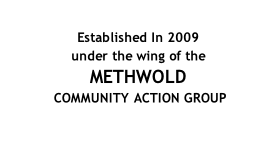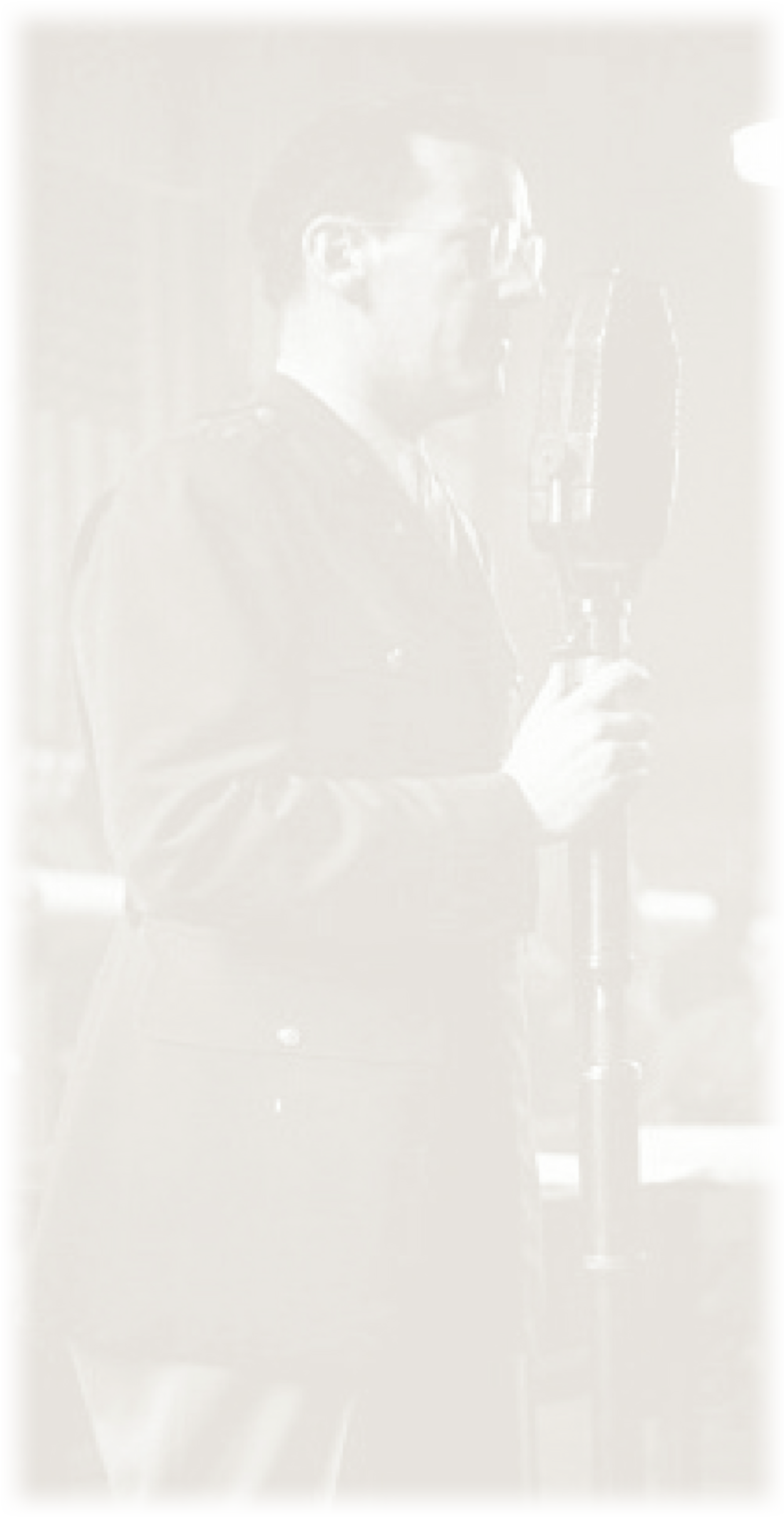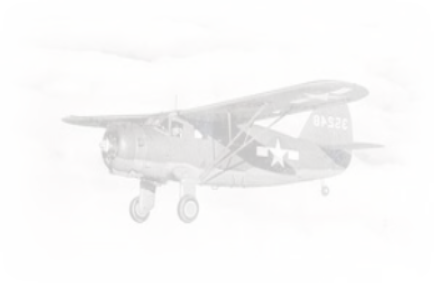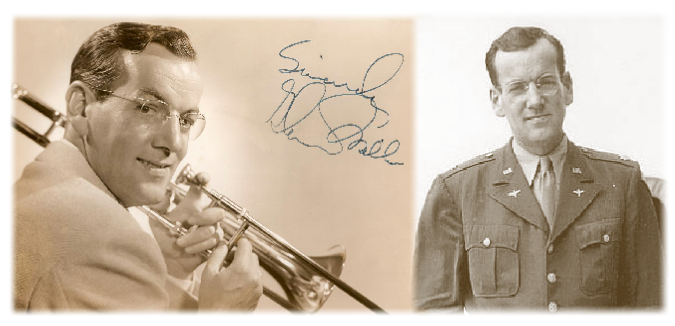












Currently, the most highly-
The late Fred Shaw was the navigator of a Lancaster (serial number NF973) based in Methwold. On the day Miller's plane disappeared, 138 Lancaster bombers – one of them Shaw's – were returning from an aborted bombing raid on Siegen in Germany because their fighter escorts had failed to get off the ground. Because the squadron could not possibly land with their staggering bomb loads, their combined total of 100,000 incendiary bombs had to be jettisoned. The bomb jettison zone was known as the South Jettison Area (a ten-
When the bombs were jettisoned from a safety height of 4000 feet, Shaw, who had never seen a bombing before, was driven by curiosity to look out the window. As the bombs exploded several feet above the surface of the sea, he saw a plane 2500 feet below, flying south. Years later he would say: 'It was obvious to me that the aeroplane below was in trouble, so I watched intently. Then, just before it went out of sight under the leading edge of the wing, I saw it flick over to port in what looked like an incipient spin. And eventually I saw it disappear into the English Channel.' The bomb aimer had reported the same sighting a moment before; now a rear gunner called over the intercom that 'there's a kite just gone in down under'.
Because they were technically not in enemy territory and the mission had been reported, the men were not debriefed, and the downed plane remained unreported.
Shaw never connected the downed plane with Glenn Miller's mysterious disappearance until 1956 when he saw the movie The Glenn Miller Story. He had decided on impulse to check his old log book – and realized that the Norseman he'd seen plunging into the sea could very well have been Miller's.
When Shaw first came out with his story, the public's initial response – especially that of the Glenn Miller Appreciation Society – was to dismiss him as a publicity seeker. A hail of awkward questions descended: How could it be proven that Miller's plane had strayed into the path of Lancasters when John Morgan had even failed to register a flight path? How was Shaw able to recognized a Norseman, when there were only a half-
The British Defence Ministry's Air Historical Branch decided to investigate the claim and recruited Roy Nesbit, an aviation historian and (now) RAF editor at the public record office, who spent years researching the problem. The findings revealed were:
1. How could Miller's plane have strayed into a jettison zone?
The Norseman had no option but to take the SHAEF shuttle path (the route employed by the Supreme Headquarters Allied Expeditionary Forces) to France. Despite all the anti-
2. Why was there a one-
The official report was that the bomb group had jettisoned their bombs at 1.40pm on 15 December; Morgan's flight log put the plane one hour ahead of the bomb group, thereby raising questions as to the validity of the claim. However, by comparing logs written in the air with operations in the ground, Nesbit was able to determine that the Americans had used local time, which was an hour ahead of Greenwich Mean Time, thereby explaining the discrepancy.
3. How could Shaw have recognized such a rare aeroplane?
In fact, Shaw had answered this question himself – his navigator training had taken place in Manitoba, Canada, where the Norseman aeroplanes were aplenty.
Although the Glenn Miller Appreciation Society dismissed the story because they believed that no plane could have possibly flown that day owing to bad weather, one member, Alan Ross, took it seriously and independently investigated the matter. He wrote in to Air Mail, the RAF Association Journal, asking for other members of the Lancaster's crew to come forward. Victor Gregory, who had captained Shaw's plane, responded to the mail, believing it to be for some sort of reunion. When asked about the sighting, Gregory confirmed the story. He himself had not witnessed the bombing of the plane; however, he recalled that the bombardier had spotted the plane, and had called the navigator over to have a look; soon after, Fred Shaw had identified the plane as a Norseman.
When asked why he had not come forward until now, Gregory replied:
When we got back from that raid, it was an aborted raid, so we didn't go in for our normal debriefing. Don't think me unsympathetic or callous, but when I heard of the plane going down, I would have said that he shouldn't have been there -
A separate investigation carried out by EA Munday of the Air Historical Branch at the Ministry of Defence revealed records confirming that a squadron had taken off at noon on 15 December 1944 to attack the railway yards at Steigen. The records further confirmed that the force had to be recalled before they even entered German-
A Ministry of Defence letter was eventually issued by Munday to Fred Shaw in 1985, stating that:
Until your story appeared in the South African press in 1984, the RAF had always regarded Miller's death as a strictly USAAF matter, as the result of some sort of flying accident, probably as a result of poor weather conditions. We have received letters at various times asking about it, some of which put forth theories, some feasible, and some not so feasible.
Up until 1984, the only RAF connection was that Miller's plane had taken off from the RAF airfield at Twinwood Farms, Bedfordshire in weather conditions which could be described as marginal, or at least marginal for that type of aircraft.
Your story, to a greater extent, changed this, and we carried out an investigation earlier this year into the aborted bomber operation of 15 Dec. 1944. Because the operation was aborted, there is no raid report on Bomber Command records, as would have been customary with a completed operation. We did find reference to the intended course.
Shaw's documents were eventually sold by Mrs Shaw, who, according to her daughter Cheryl Fillmore of Southampton, believed that the material should not rot in a drawer but be made available to those who were interested in the matter. The documents were sold by Sotheby's on 13 April 1999 for a grand sum of £22,000.
The logbook of Derek Thurman, the flight engineer on board Shaw's Lancaster, surfaced in 2000, corroborating Shaw's testimonial. Thurman had written that when the bombs were away, three crew members on board the plane had spotted a light aircraft below, which seemed to have been downed by the hail of explosives. The bomb aimer saw it first from the nose and commented on it, whereupon the navigator shot out of his seat to the side blister (window) to have a look. He saw the plane whip by. Seconds later, the rear gunner called in to say: 'It's gone in, flipped over and gone in.' Thurman's logbook was also sold by Sotheby's, fetching a paltry sum of $880.
Arguments against Shaw's Testimonial and Nesbit's Report
In 2003 Howard Roth, who had been a B-
1. The Dubious Nature of Shaw's Public Testimonial
The first discrepancy he pointed out was the testimonial Shaw had given to both The History Channel (THC) and the Public PBS. Shaw had initially identified the downed plane as 'a sort of Norseman' while giving the THC interview; later, when he was on PBS he'd changed it and stated explicitly that the plane had been a 'Noorduyn Norseman'. He had never mentioned bombs during the THC interview; it had only surfaced during the PBS one. Furthermore, Roth pointed out, with a combined speed of about 300 mph, very low visibility, and the fact that the plane downed was a small one, how could Shaw have seen the Norseman flip over? The plane would more likely have disintegrated.
Roth also pointed out that Shaw's initial reluctance to come forward to report the crash because 'he didn't want to get involved in a long drawn-
2. The mystery bomb jettison area
And then there was the deal with the jettison of bombs, and where it happened. Nesbit and Shaw had both asserted that it was in the South Jettison Area; however, RAF pilot Ken Blythe, who had flown Halifax bombers during the war, stated that the jettison zone had been in the North Sea; he'd never so much as heard of the south one. Ron Brown, who had served on one of the Lancasters, had confirmed this, and had added that visibility was so bad that on occasions they could only see as far as their Lancaster's wing tips.
Furthermore, the allegation that a bomb had exploded upon jettison, Roth argued, was a serious one. The bombs were not designed to detonate on water impact; had they done so, there would not have been a bomb group to speak of, let alone Glenn Miller's aeroplane!
3. The undetermined flight route
And then there was the flight path to consider. Apparently Nesbit and Shaw had detailed different routes -
While the SHAEF shuttle might very well have caused Miller's plane to stray into the bomb drop zone had a pilot used an inaccurate magnetic compass, the fact was that, despite its supposed equipment deficiencies, the Norseman had a highly accurate gyro compass as almost enough blind flying instruments to match those of the B-
4. Time Difference
Nesbit's explanation for the time discrepancy made no sense either. He had calculated that, what with the difference between local time and Greenwich Mean Time, Miller's plane could very well have strayed into the path of Lancasters. However, Nesbit had apparently neglected the fact that England, at the time, was on Greenwich Mean Time. Taking this adjustment into consideration, the Lancasters and Miller's plane would have been at least 250-
So might Shaw's crew have gotten it wrong? Is it possible that the plane they'd seen plunging into the English Channel was not the Norseman carrying Miller to Paris? The reader is advised to personally go over the pertaining data and arrive at his or her conclusion.
Epilogue
While romantic speculations of Miller having been the unfortunate victim of a vicious conspiracy may be appealing to those with rose-
However, we may never know for sure what happened in the final minutes of Miller's life. All we know is that he and his companions had boarded a plane, never to be seen again, and the world of swing music is a much poorer place for his passing.
References
Online International Newspaper Articles
BBC News: Bomb Clue to Glenn Miller Mystery
Guardian UK: Glenn Miller Died under 'Hail of British Bombs'
Netlondon.com:Does a wartime logbook solve the mystery of Glenn Miller disappearance?
New York Times: RAF Bombs May Have Downed Glenn Miller Plane
Chris Valenti's Glenn Miller files
Fred Shaw's flight map
Glenn Miller Conspiracy Finally Exposed!
The Glenn Miller Mystery
Straight Dope Science Advisory Board Report
It was a cold day on 15 December, 1944, when Major Glenn Miller boarded a Noorduyn 'Norseman' C-
Alas, the plane never made it to its destination. Its passengers were never seen again.

The following report is taken from a BBC write up, gives all the known details of this fascinating story and looks into one theory over the tragic disappearance of this legendary wartime musician and bandleader. By posting it on our site, we only serve to tell the story and it’s connection with Methwold’s RAF past. Sadly, we’ll probably never know what really happened.

GLENN MILLER 1904 -
The Mysterious Disappearance
(The Methwold Connection?)
RAF METHWOLD: THE GLENN MILLER STORY
